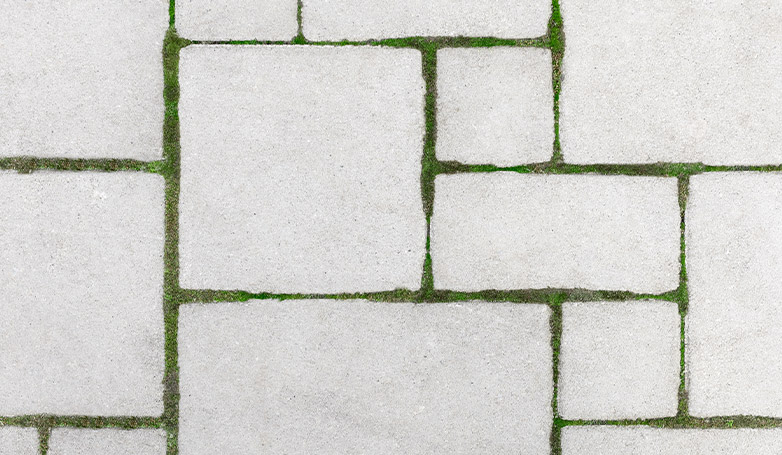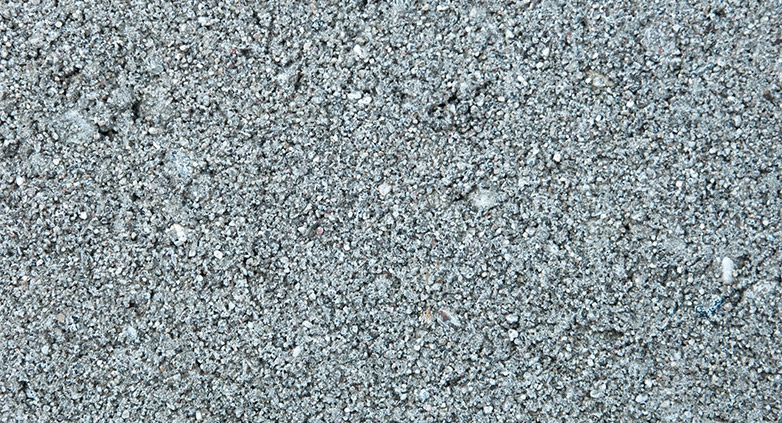Concrete Maintenance – 11 Factors to Make Your Pavement Last
Proper concrete maintenance can be the difference between still looking new years later and a surface people walk across fearing for their safety. While concrete is a long-lasting, durable material, it still requires maintenance to ensure longevity. Concrete repairs can be expensive and intensive, but you can largely avoid them with proper concrete maintenance.
Concrete maintenance covers all the steps you take to keep your structure looking and functioning at its best. Cleaning and sealing are the most important aspects of general preservation, but it’s vital to know the specifics of your material and its conservation needs. Whether your concrete is stamped, colored, polished, or standard, it needs maintenance to last its lifespan.
Read on to learn:
- Does concrete require a lot of maintenance?
- How often does concrete need maintenance?
- What maintenance does concrete need?
- Concrete driveway maintenance
- Concrete patio maintenance
- Does stamped concrete need maintenance?
- Concrete parking lot maintenance
- Colored concrete maintenance
- Polished concrete maintenance
- How to keep concrete clean
- How to preserve concrete
1. Does concrete require a lot of maintenance?
Throughout its lifetime, your concrete will likely require little in the way of maintenance and routine care. With proper maintenance, expect your concrete to preserve its function and appearance for the structure’s life, with few repairs necessary. Concrete maintenance includes cleaning and sealing, removing stains, using compatible chemicals, limiting weight, and repairing all cracks and holes as soon as possible.
Further Reading — Concrete Parking Lot Repair — Everything you need to know

Related Articles:
2. How often does concrete need maintenance?
At a minimum, concrete should be cleaned yearly, ideally in the spring. Cleaning removes dirt, salt, and grime built up over the winter. Depending on the level of wear, you need to reseal your concrete surface every 1-2 years to reduce moisture infiltration and stains. You should clean any spills as soon as possible to prevent stains. You should also repair any cracks or holes as soon as possible to prevent further damage to the concrete surface and the underlying support.
Basic Concrete Maintenance Timeline
| Maintenance Type | Frequency | Effect |
|---|---|---|
| Sweeping | Monthly | Removes surface dirt and debris |
| Washing | Yearly | Removes surface dirt and helps prevents stains. |
| Resealing | 18 Months to 3 Years | Protect the underlying concrete, preserve the clean appearance |
3. What maintenance does concrete need?
Keep your concrete looking clean and bright instead of stained and dirty by making yearly cleaning a vital part of your concrete maintenance schedule. After cleaning in the spring, reseal the concrete surface to maximize your concrete’s lifespan. Other aspects of concrete maintenance include repairing cracks, joints, and holes, using the correct chemicals, and ensuring functional drainage for the area to preserve the support structure for your concrete surface.
As you already know, concrete is an expensive material. Sticking to a proper maintenance schedule allows you to protect your investment.
4. Concrete driveway maintenance
Keeping a routine maintenance schedule for your concrete driveway will keep it looking fresh and new for years. Clean the driveway yearly, and depending on the weather in your area, traffic, and the amount of wear, reseal it every 1-2 years.
To keep your driveway looking its best, remove all stains immediately before they absorb into the concrete and cause discoloration. Avoid using harsh deicing chemicals on your concrete driveway, as they can cause or contribute to surface damage. If you have issues with traction, consider using sand.
While incredibly durable, your concrete driveway wasn’t built to support the weight of heavy machinery. Ensure these vehicles park on the street, where they won’t cause as much damage.
Further Reading — Concrete Driveway Thickness — What is your best option?
5. Concrete patio maintenance
You want your concrete patio to look as vibrant at ten years as it did on day one. To keep it looking new, reseal your patio every 2-3 years. A structure to provide shade will make your patio more comfortable and extend the life of decorative finishes and sealers. Ensure your downspouts don’t drain onto your patio, and your drainage system moves the water where you want it.
Using saucers under potted plants prevents soil, fertilizer, and water from staining your concrete. A power washer is an excellent tool for cleaning your concrete patio. Just be careful not to set the pressure too high or use too close a range, as it could damage the concrete.
6. Does stamped concrete need maintenance?
Stamped concrete maintenance is slightly different from caring for a flat concrete slab. Never use a pressure washer on your stamped concrete. The high pressure can break down the sealer over time and increase the wear rate of the concrete. Use gentle cleaners to release the dirt and debris trapped in the crevices of your stamped concrete, and rinse with a garden hose.
Reseal stamped concrete every 18-24 months to maximize the lifespan and protect color. You should avoid constant water exposure, scraping with metal furniture or shovels, salt and deicers, and acidic pet accidents on your stamped concrete to protect it as much as possible.
7. Concrete parking lot maintenance
The most important thing you can do to maintain a concrete parking lot is to keep it clean and in good working condition. Oil stains and grime won’t damage the structure of the concrete, but stains will become permanent over time. Clean concrete lasts longer and helps convey a better image for your business.
Seal cracks as soon as possible to prevent damage to the underlying structure and to avoid potholes. Sealing cracks in concrete stops water from getting under the concrete and eroding the support layers. Sweeping regularly and power washing yearly will help your concrete parking lot reach its expected 30-year lifespan. You will need to resurface your parking lot every 2-3 years to slow down its deterioration rate.
Further Reading — What causes potholes — A complete guide to potholes
8. Colored concrete maintenance
The pigments in colored concrete extend through the slab, so even with surface abrasion, it should maintain its color and shouldn’t fade. Clean it as you would plain concrete— sweep away surface dirt and debris, wash the concrete with gentle soap and water, and use a specialized concrete cleaner for tough stains. When sealing, which should be done every 18-24 months, use the concrete sealer recommended by the manufacturer of your colored concrete, as they will know what works best.
9. Polished concrete maintenance
While a polished concrete floor is low-maintenance, it still requires some work to keep it in peak condition. Prevent surface damage by dust mopping daily with a clean microfiber pad. Mop your polished concrete floor with clean water and a non-acidic floor cleaner. Clean spills immediately to prevent any stains from penetrating the surface of the concrete. If the regular maintenance of your polished concrete floor is too much, consider hiring a professional service to care for it.
10. How to keep concrete clean
One of the most important things to remember about cleaning concrete is to use compatible chemicals. Check the manufacturer’s specifications to make sure whatever you plan to use is safe for your concrete. Colored, polished, stamped, or decorative concrete may separate cleaners.
Surprising ways to clean concrete:
- Ammonia — Use to clean discoloration from concrete. Mix 1 gallon of water with 1 cup of ammonia and scrub the discolored spot. Rinse the concrete thoroughly when finished. Ammonia works well for animal urine and other organic stains.
- Baking Soda — Try using baking soda to melt the ice on your concrete surface in winter. Baking soda is less harmful to your concrete than salt because it is less abrasive.
- Oven Cleaner — Use oven cleaner to tackle oil, grease, or transmission fluid spots on your concrete surface. Let it stand for 10 minutes before scrubbing with a stiff brush and rinsing thoroughly.
- Kool-Aid — One of the most surprising cleaners is unsweetened lemonade Kool-Aid. Mix it with hot water and wash away those rust stains.
- WD-40 — Spray a little WD-40 on stubborn oil stains and simply rinse with water.
Further Reading — Parking Lot Cleaning — Steps to keep your lot clean
11. How to preserve concrete
The most effective way to preserve concrete is to keep it clean and regularly sealed. Proper maintenance extends the longevity of your concrete and keeps it looking fresh and bright. Sweep it often to clear away surface dirt and debris. Take care of spills immediately and wash the concrete surface regularly. Ensure a proper drainage system for the area so the layers supporting your concrete stay intact and don’t erode. Reseal your concrete on a steady schedule appropriate for the type and location.
Further Reading — How to build a concrete catch basin — 8 steps to follow
Conclusion
Concrete surfaces are expensive to prepare and pour, so it only makes sense to protect your investment with proper maintenance. Your concrete surface can last 30 years if you provide the right care. Sufficient maintenance will keep your concrete looking fresh and new years after it was poured. You can often avoid costly, labor-intensive concrete repairs with proper maintenance.


